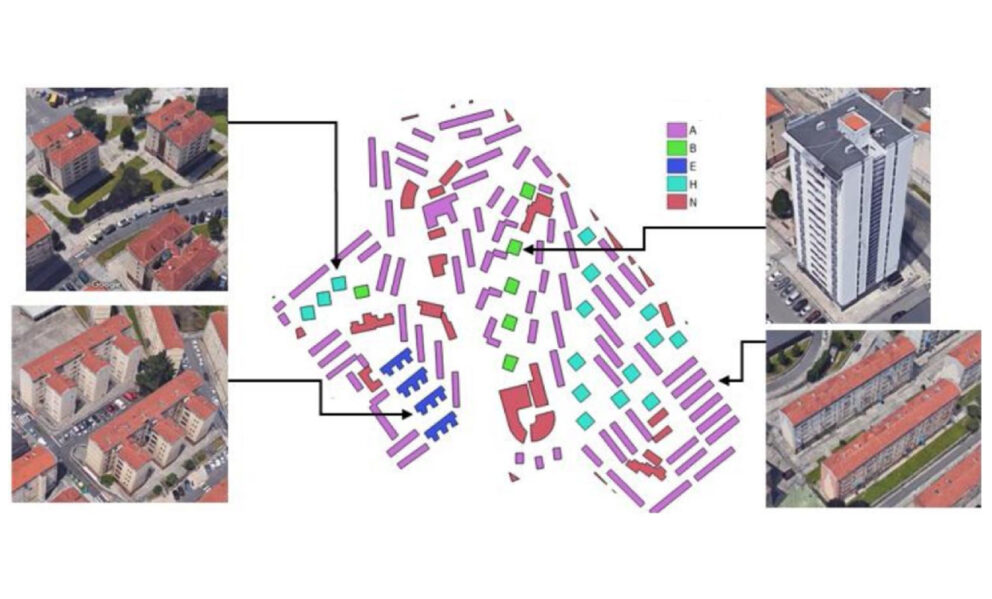The nearly Zero Energy Building concept should be adopted in the renovation of existing buildings and actions upscaled and applied to larger and larger urban areas. In this context, this paper presents an optimization methodology for drafting integral renovation actions at district level. The methodology is based on a MILP model that allows selecting energy saving measures, as well as the design and operation of energy supply systems amongst a very large set of potential permutations. For its application, the concept of District Equivalent Building is introduced, defined as a virtual building with a set of energy loads equal to the addition of all the individual load vectors of each building.
The methodology was applied to a real residential district located in Bilbao (northern Spain). For this case study, the optimal renovation plan was obtained, considering for that three different optimization objectives: (i) Optimal-Cost, (ii) Zero Energy District (ZED) and (iii) Zero Energy District including domestic electricity consumption in the calculation of the non-renewable primary energy consumption (ZED’). Although similar solutions were adopted for each of these cases, significant differences were get attending the hourly operation of the solutions. These cases were economically assessed and the optimal-cost curve was obtained.

